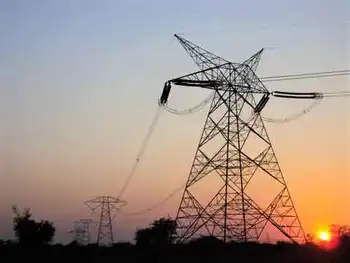Time is ripe for industry to cash in on energy savings
By Reuters
Arc Flash Training CSA Z462 - Electrical Safety Essentials
Our customized live online or in‑person group training can be delivered to your staff at your location.

- Live Online
- 6 hours Instructor-led
- Group Training Available
The $787 billion federal stimulus bill contains some $60 billion of grants and incentives aimed at cutting energy use. In addition, 19 U.S. states have adopted mandates that essentially compel electrical utilities to find and finance energy savings for their customers.
The mandates aim to lower peak electricity loads so utilities will not have to build expensive new power plants. Companies also can earn carbon credits to sell later under the anticipated federal cap-and-trade system. Congress is expected to set an emissions baseline that precedes enactment of the law, allowing companies to earn credits now.
But energy experts and consultants said some executives at industries, which account for a third of U.S. energy demand, may hold off on energy savings until the economy improves.
For now, companies may hoard cash while plants run below capacity, analysts said.
"When cash is king and times are tight the returns have to be there," said John Rowe, chairman and chief executive of utility Exelon Corp, who co-chaired a panel that recommended changes to energy policy in a report for the Chicago Council on Global Affairs.
"The economic difficulties we have right now only reinforce the need for these efficiencies," echoed co-chair John Livingston of consultant McKinsey & Co.
Energy experts said government incentives to cut energy use are in place.
"Times are tight right now, but there are significant opportunities to leverage," said Rebecca Stanfield of the Natural Resources Defense Council environmental organization.
"If you're a company with a planning horizon that only allows you to institute programs that pay back in two or three years, that's where the stimulus money or the utility programs can make energy efficiency work for you. Something with a five- or 10-year payback period will now be affordable," Stanfield said.
"Fundamentally, there are three ways to get more energy efficiency," Rowe said. "One is you seduce it through advertising and persuasion. Another is you compel it by tighter regulations, and the third way is you induce it with higher energy prices. And I think, over time, we're going to see all of the above," Rowe said.
The U.S. Energy Information Administration expects electricity demand, currently averaging roughly 11 billion kilowatt-hours per day, to rise about 1 percent each year. The price of power, which the agency said has jumped in recent years, is expected to stabilize around 9 cents a kilowatt-hour for a few years before rising steady after 2015.
Many U.S. manufacturers are only dimly aware of how much energy the elements of their businesses consume — or how much they could save, according to energy consultants.
Industrial conglomerate Siemens and Milwaukee-based Rockwell Automation Inc are among the industry leaders in the energy consulting field. They offer a range of options: from energy-sipping lighting to variable-speed motors to turbines that convert waste heat into electricity for the factory or to feed back into the grid.
"We recently were with a customer in food processing and in the discussion the senior executive said, 'You know, I'm not even sure what my load is,'" Siemens' Energy and Automation CEO Dennis Sadlowski said.
"The energy bill was close to 17 percent of his operating costs. And that was, for him, somewhat enlightening."
Siemens said it shrinks a typical client's carbon footprint by around a third or more.
Energy efficiency is sometimes viewed as the less-glamorous cousin of renewable energy sources such as solar and wind, which unmistakably lend companies a coveted "green" image.
But energy savings are increasingly recognized as interchangeable with new sources of power, and efficiency has been put on equal footing with renewable energy in the climate bill currently under consideration in the U.S. Congress.
Rockwell Automation's own research found that a feasible 10 percent reduction in energy use by U.S. industries would translate into $6.6 billion in annual savings.
Rockwell spokesman John Bernaden said engineers foresee a day when computers that can now monitor and control lighting, heating and cooling in office buildings will migrate to the factory floor. By tracking the variable cost of energy charged by utilities, a manufacturer could adjust the pace of factory production to achieve savings.











